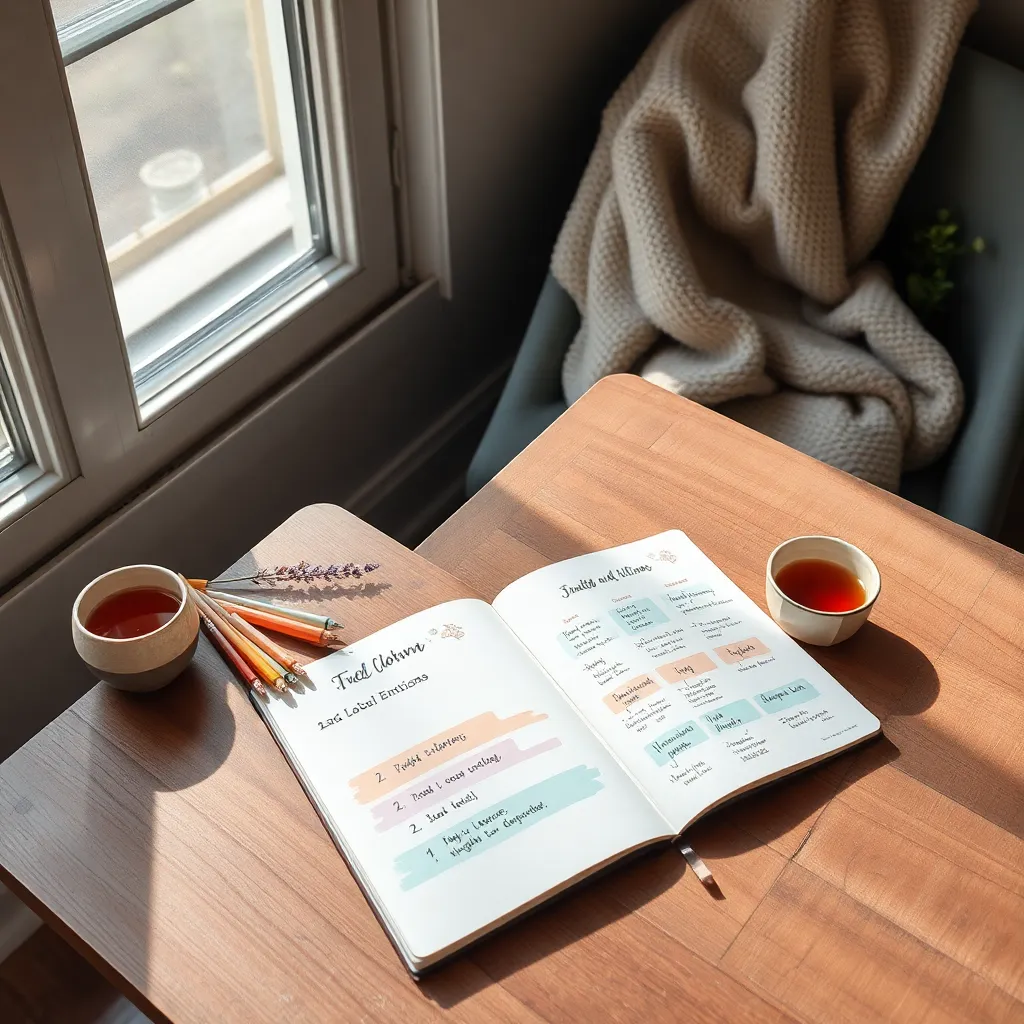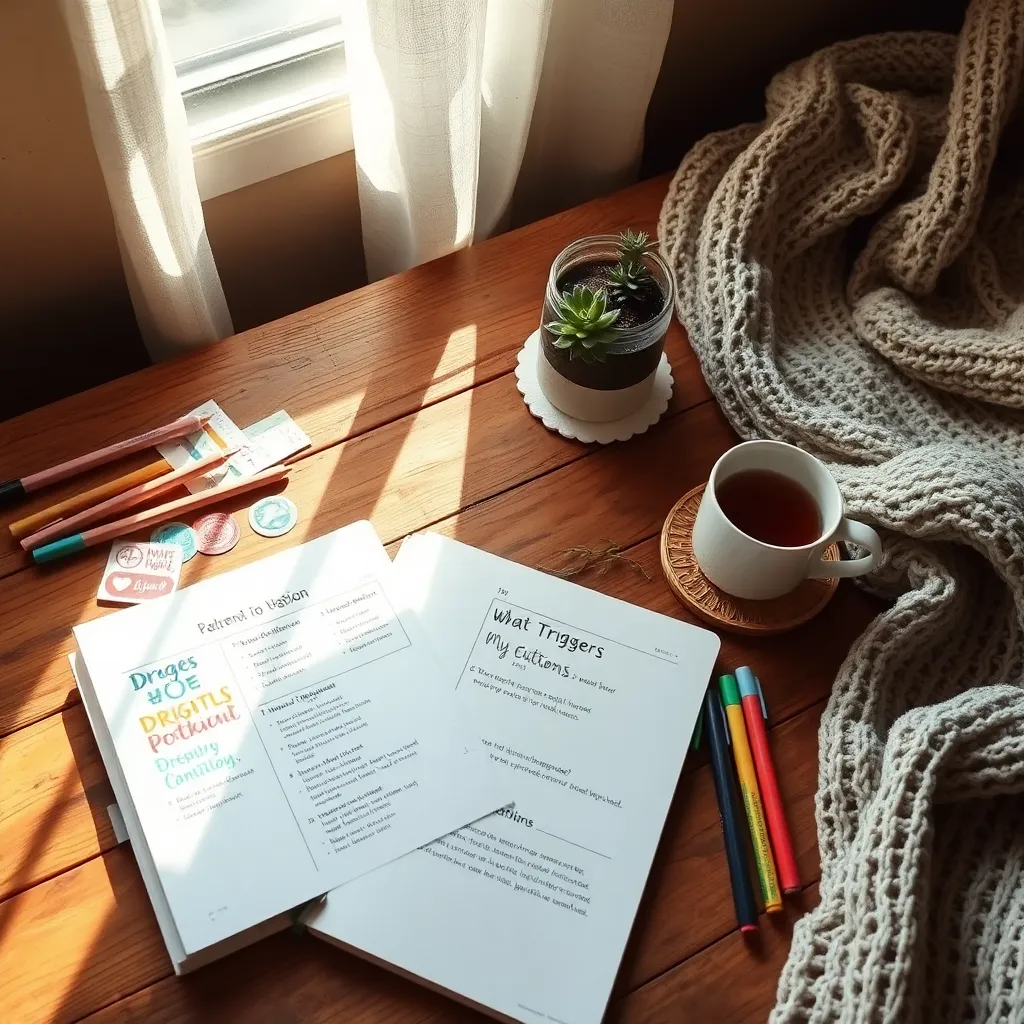In the whirlwind of daily life, emotions can often feel overwhelming. Journaling offers a gentle refuge, helping you untangle thoughts and find peace within.
Dive into this practice and discover clarity and emotional balance. Together, we’ll explore how writing can transform your inner world.
Set Your Emotional Intentions

Begin by setting a clear emotional intention for your journaling session. Focus on what you want to explore, such as understanding a feeling or finding peace. This clarity guides your reflections and deepens your emotional journey.
Use prompts to direct your thoughts. Try asking:
- “What emotion am I experiencing now?”
- “What do I need to feel more balanced?”
These questions help you uncover insights and foster emotional growth.
Create a Safe Writing Space

Create a serene space by choosing a quiet corner, adding a cozy blanket, or lighting a scented candle. This enhances focus and signals your mind it’s time to process emotions.
Use prompts like: “What emotions am I feeling right now?” or “What do I need to let go of today?” Keep it simple and honest, ensuring your writing space feels safe and inviting.
Identify and Label Emotions

Start by identifying emotions with simple prompts. Ask yourself, “What am I feeling right now?” or “What triggered this emotion?” Acknowledge each feeling without judgment to deepen self-awareness.
Labeling emotions helps clarify your inner world. Use prompts like “This feeling is…” or “I notice my emotion is…” to articulate your experience. This practice fosters emotional clarity and understanding.
Explore Triggers and Patterns

Recognize recurring triggers by noting events or thoughts that stir emotions. Explore patterns by revisiting entries to see what consistently affects you.
Use prompts like:
- “What situations often lead to strong emotions?”
- “How do I typically react, and what can I change?”
This empowers you to break unhelpful cycles.
Reflect and Seek Insights

Begin with a moment of mindfulness. Take a deep breath and ask yourself: “What did I learn about my emotions today?” Reflecting helps uncover hidden insights.
Use prompts like:
- “What is this emotion teaching me?”
- “How can I grow from this experience?”
Allow your reflections to guide healing and self-discovery.
Conclusion: Creating Beautiful Outdoor Spaces
In navigating the complex landscape of relationships, journaling emerges as a transformative tool to process emotions and strengthen connections. This article highlighted five key concepts: understanding emotions to improve communication, identifying patterns that influence behavior, fostering empathy through self-reflection, setting healthy boundaries, and cultivating gratitude to enhance relational satisfaction. Each concept equips you with the insight to nurture more meaningful and resilient relationships.
As a practical next step, consider dedicating just 10 minutes a day to journaling about your emotions and interactions. This small yet impactful habit can lead to profound changes in how you relate to yourself and others.
Don’t let these valuable insights slip away—save or bookmark this article now to revisit these concepts whenever you need a refresher. By making journaling a regular practice, you’re paving the way for a future filled with deeper connections and enduring relationship success. Embrace this journey with an open heart and watch as your relationships flourish, empowered by your commitment to growth and understanding.


